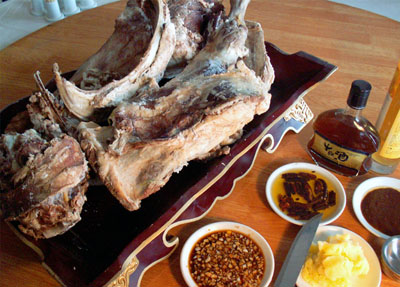@livinglava,
Quote:Sorry, but although you are right that there are more responsible and healthy ways to raise, slaughter, butcher, and consume meat; a vegetarian diet is still more responsible and healthy.
There might be a case to make for a certain amount of dairy, but why meat? What can meat provide that humans can't get from eating the same plants that are fed to meat-animals, such as soy and wheat proteins?
Again, your ignorance is getting in the way. That is not meant as an insult, and if you take 3 seconds to look up the definition of "ignorance" you'll find it describes a lack of knowledge in a particular area, not stupidity.
This is a photo of the "grasslands" of Inner Mongolia that have been under drought conditions for most of the past 30+ years.

I invite you to move to this location and try to sustain yourself on vegetables. That will be hard to do under the persistent drought conditions. However there are tufts of grass that do manage to grow. I invite you to eat the tufts of grass, if you wish. The alternative, as practiced by the locals, is to raise sheep which are indeed able to eat the tufts of grass and turn them into meat. Mutton and sheep milk are the primary foodstuffs of the Mongolian people.
I don't raise this randomly, I have traveled to Inner Mongolia and have seen this first hand and have eaten with the Inner Mongolian peasants. Since you fairly obviously haven't, you assume that they can simply order vegetable dishes fully prepared and delivered by Uber from their local Whole Foods. But no, there's no Uber there, nor Whole Foods.

There are thousands of other examples that you are equally ignorant of, including the fact that
YOU DON'T EAT CORN STALKS. However cows do. The chopped up cobs and stalks of corn plants would otherwise go to waste, but are good food for cows that can digest these and turn them into edible food. Let me know when you figure out how YOU can eat these and turn them directly into energy. Cows figured that out many millennia ago. It's called "Corn Silage" Look it up.
 http://utbfc.utk.edu/Content%20Folders/Forages/Hay%20and%20Silage/Publications/sp434d.pdf
http://utbfc.utk.edu/Content%20Folders/Forages/Hay%20and%20Silage/Publications/sp434d.pdf